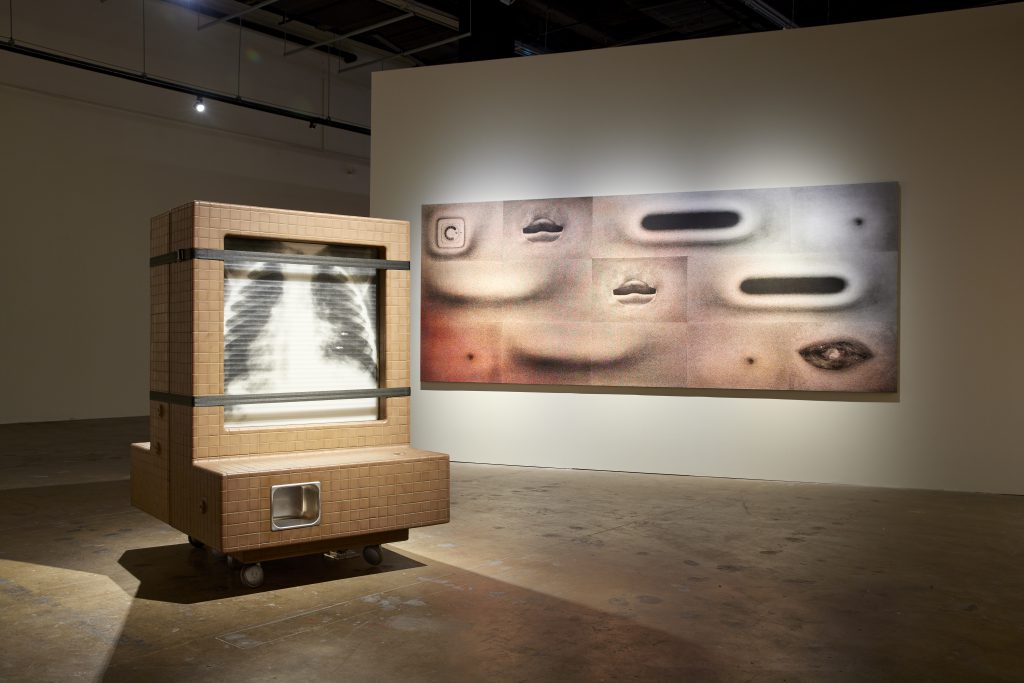
Tishan Hsu, Double Bind, 1989; Natural Language, 1990, supported by Empty Gallery, Hong Kong
Tishan Hsu, Double Bind, 1989; Natural Language, 1990, supported by Empty Gallery, Hong Kong

Tishan Hsu created the work Double Bind, a two-part vehicular display case showing an X-rayed pair of lungs, in 1989, a time when the widespread effects of televisual and computational advancements that swept into our domestic, public, and work spaces were mostly unknown. The concurrent reconceptualization of the image of our body, brain, and entire environment brought on by the digital age was merely a speculative futuristic scenario. Hsu’s seminal piece reads as a programmatic allegory of our dual relationship with technology: machines that treat and regulate the body expand our knowledge but limit our awareness to statistical and institutional patterns. The body becomes a patient, victim, or specimen of machines that, to quote Elaine Scarry, “scan, clean, and store the body, that might well torture it while also offering it opportunities for renewal.”
Hsu studied environmental design and architecture at MIT and was especially sensitive to these developments. Questions about the embodiment of technology led him to explore the threshold of biomorphic material experimentation and theoretical concepts in postmodern and post-structural semiotics. His 1990s silkscreen prints combine images of imagined bodily skin mounds and ATM machine slots created with pastels with photographic media visuals from biomedical textbooks, gaping fish mouths, and thermostat dials to evoke epidermal topographies of visceral sensation that oscillate between object and painting, manual and digital construction.
From his early projects to the present, Hsu has responded to the intrinsic relationship between technology and the body by adapting his palette to the most current image-making techniques, including forms of modularity, reproducibility, cloning, and morphing. The site-specific work Interface Wall 3.0 – Gwangju (2002–21) blankets the industrial Biennale Hall with a membrane-like wallpaper of fleshy orifices, tongues, and nipples. Dissolving the boundaries between the digital, architectural, and corporeal, the machine seems to produce its own image while it interrogates the margins of technological visibility. Traversing from tile pieces to silkscreens and Photoshop-manipulated images, the skin becomes a paradigmatic motive, a human architecture of sociopolitical significance.
Tishan Hsu, Double Bind, 1989; Natural Language, 1990, supported by Empty Gallery, Hong Kong